Ecstatic Cinema: Romantic Experimental Filmmaking in the 1960s
By Wheeler Winston Dixon
n
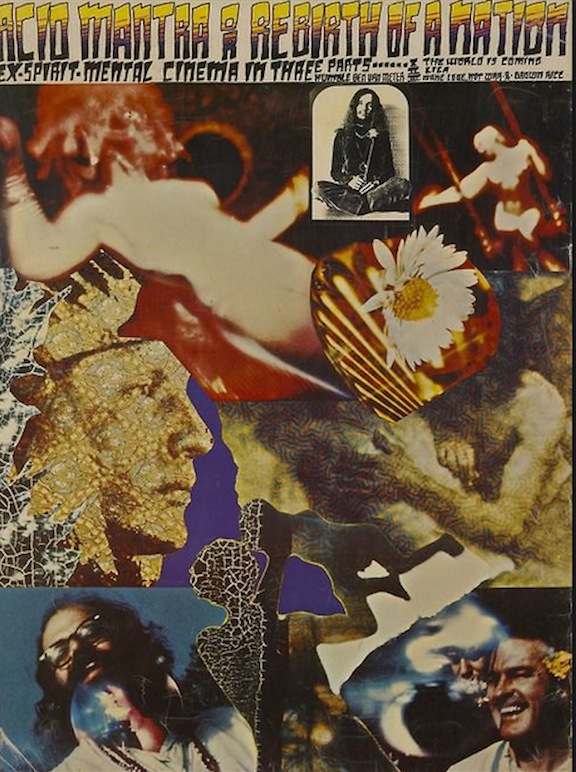
Poster for Ben Van Meter’s anarchic 1968 film “Acid Mantra, or Re-Birth of A Nation”
In the era we live in, ecstasy is in short supply. Escape from reality is one thing, and it’s in high demand right now, packaged and sold in a seemingly endless series of comic book and blockbuster franchise films that bludgeon audiences into submission, but that’s not what I’m talking about here. Rather, I’m examining a group of films made in the early to mid 1960s that openly celebrated life, and our connection to it, through a strategy of sensory overload that sought to make the viewer almost a participant in the film’s content, to convey, without restraint, the sheer joy of existence in world of seemingly endless possibility. Perhaps it’s impossible to make such films today; perhaps we have lost our connection to the real world to such a degree that only CGI effects and amped-up soundtracks reach mass audiences. But, as I’ll argue, there seems to be a small but growing counter-movement that values these visions of another time and place, and seeks to preserve them — perhaps as signposts to the future of cinema, reclaimed from the past.
But the central problem here is preserving these works — most often shot on 16mm reversal film, and then printed on Ektachrome with an optical track for final release, an option no longer available since Kodak discontinued reversal print stock, and thus necessitating the creation of an internegative from which positive prints can then be struck, consequently introducing an extra “generation” into the image, as well as creating a much harder look than the soft, elegiac patina offered by such film stocks as Ektachrome 7241 (for outdoor filming) and Ektachrome 7242 (balanced for tungsten light indoors). Then, too, there is the very real question of what will happen to “personal” films in a corporate era; even such artists as D.A. Pennebaker, who had significant commercial success with his 16mm documentaries such as Don’t Look Back (1967) and Monterey Pop (1968) has recently been searching for a home for his original camera materials, in an age in which only blockbusters seem to be getting any sort of real theatrical release, and independent visions increasingly fall by the wayside.
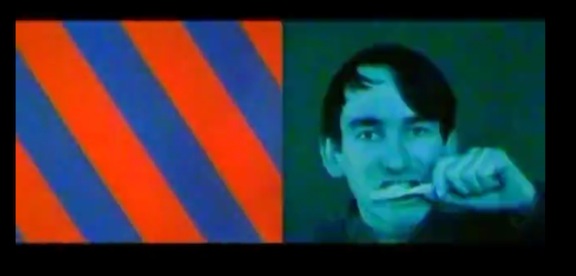
“Razor Blades”
In such films as John Hofsess’ half-hour split screen production Palace of Pleasure (1966/1967), shot in extravagantly beautiful color; Gerard Malanga’s elegiac and deeply Romantic In Search of the Miraculous (1966), a film in which two complete strands of 16mm imagery are superimposed upon one another for the entire length of the film; Ben Van Meter’s enthrallingly anarchic Acid Mantra, or Re-Birth of A Nation (1968), in which waves of superimposed imagery created in the camera compete relentlessly for the viewer’s attention; Paul Sharits’ Razor Blades (1966), another half-hour split screen dazzler that is seldom screened due to projection difficulties; and Andrew Meyer’s gentle, evocative An Early Clue To The New Direction (1966), I would argue that a certain period of experimental filmmaking came to a crashing end – note the dates of each of these films, all centering around the pivotal year of 1966 – before the introduction of structural cinema with Michael Snow’s Wavelength (1967) ushered in a new era of personal filmmaking.
Critics jumped on Wavelength full force, hailing it as a completely new direction in filmmaking, although its precedents can be clearly seen in the early works of Andy Warhol, as well as Snow’s own New York Eye and Ear Control (1964), which gestured toward the austere formalism that characterized this new wave of cinema. Such artists as Ernie Gehr and Hollis Frampton followed Snow’s example, and the Romantic filmmaker Warren Sonbert, who had earlier created such luxurious and deeply personal films as Amphetamine (1966), Where Did Our Love Go? (1966), Hall of Mirrors (1966) and The Bad and the Beautiful (1967) broke off from his earlier work for more severely disciplined work in his later films Carriage Trade (1972), Rude Awakening (1976), and Divided Loyalties (1978). In many ways, for the purpose of this article, Sonbert’s case can be seen as representative of what happened to the experimental cinema, on an international scale, as a whole.

René Ricard in Warren Sonbert’s “Hall of Mirrors”
The problem here isn’t that the works of the so-called “structuralist movement” are without value; they clearly are rigorous, formal experiments that certainly repay repeated viewings, and did indeed open up an entirely new way of looking at cinema, a “less is more” approach that forced the viewer to concentrate deeply on the images on the screen, viewing them from a psychic and physical distance. In direct opposition to this approach, the experimental Romantic cinema of the early to mid 1960s sought to overwhelm the viewer with a barrage of seductive and inviting images, often presented in such abundance that the viewer would leave the theater dazzled, still trying to sort through the visuals being presented on the screen.
A perfect example of this approach can be found in John Hofsess’ now-forgotten, once highly praised film Palace of Pleasure, which only recently has been rescued from near oblivion by the filmmaker and critic/historian Stephen Broomer, as outlined in detail in his book on Hofsess’ work, Hamilton Babylon: A History of the McMaster Film Board. Hofsess made the film when he was a student working in Canada, as part of a collective that included future ultra-commercial filmmaker Ivan Reitman, who would soon branch out with such early films as Cannibal Girls (1973), and exploitation horror/comedy featuring members of the Second City comedy troupe. Reitman, who would late helm such mainstream films as Meatballs (1979), Stripes (1981), and Ghostbusters (1984), was moving in one direction, towards mass audience acceptance; Hofsess was just as clearly marching to his own drummer, making films for himself alone, eschewing plot, narrative, characterization, and other normative values of mainstream cinema to create an ecstatic vision of the world as he wished it to be, devoid of any desire other than to enthrall his audience with the sheer audacity of his vision.
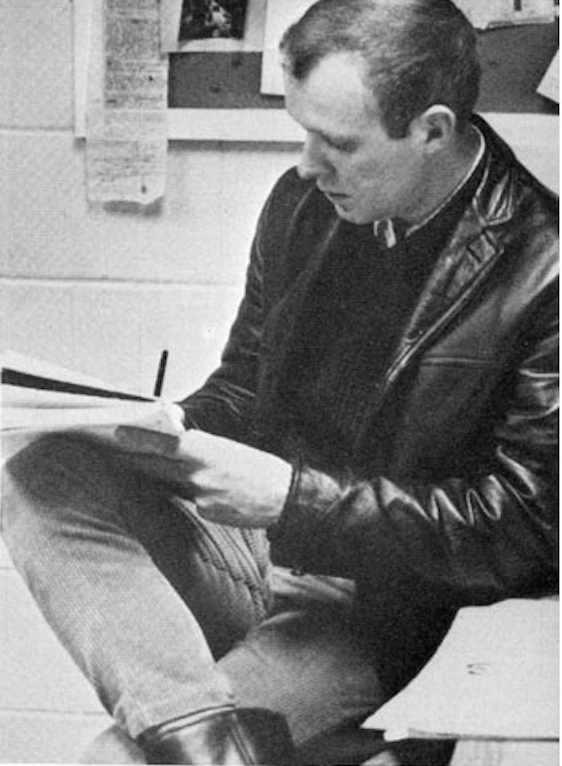
John Hofsess
As Jason Anderson wrote of Palace of Pleasure in Artforum in 2009, on the occasion of one of the film’s rare screenings — the two-projector, 16mm format of the film makes showing it inherently difficult, and a post-16mm world, where 16mm projectors have become a rarity, militates against wider distribution of the work —
John Hofsess’ Palace of Pleasure (1966/67/68) as a trippy time capsule of Canada’s nascent ’60s film underground would be apparent even if it didn’t include the sight of a young, shirtless David Cronenberg slipping into bed with a nude man and woman. The future director of Videodrome (1983) and Crash (1996) was one of several Ontario students cast as actors in Hofsess’s ambitious scheme to fashion an appropriately mind-bending and taboo-busting cinematic response to the era’s tumults, one that was directly inspired by a 1966 appearance at McMaster University (where Hofsess went to school) by the Velvet Underground and the Exploding Plastic Inevitable.
Along with poems by the not-yet-famous Leonard Cohen, the fuzz-laden death rattle of the VU’s “European Son” is a key part of the aural accompaniment to Hofsess’s thirty-eight-minute film, which will have its first public screening since 1968 at Cinematheque Ontario. [. . .] While there’s not much shock value left in its juxtaposition of grisly Vietnam War footage, kaleidoscopic abstract imagery, and shots of Hofsess’s classmates performing erotic, vaguely Crowleyite rituals, Palace of Pleasure nevertheless retains a raw vitality. With its vibrant color palette, use of multiple projectors, and rapid cuts, Hofsess’s film still induces the intended sensory overload.
Long thought lost, the work was recently restored by film scholar Stephen Broomer after a print was discovered in the archives of the Canadian Film Institute. When it first began to circulate in 1967, Palace of Pleasure was an early triumph for the country’s independent film community. At the time, it screened at New York’s Museum of Modern Art and represented Canadian film at a presentation at the National Film Theatre in London; there were also short theatrical runs in Los Angeles and Chicago. Jonas Mekas and Gene Youngblood even cited it as one of the best films of the year.
But, as Broomer notes in his book Hamilton Babylon, by the following year, Palace of Pleasure had all but been forgotten, due to “a shift in avant-garde cinema” which first became evident during the Canadian Artists ’68 film festival at the Art Gallery of Ontario in Toronto. Suddenly, with the “shift” to structuralism, and the wider distribution given to such films as Andy Warhol’s equally ambitious and mind-bending film The Chelsea Girls (1966), another split screen color and black and white film with a marathon running of three and a half hours — one can see this two-projector format was very popular during this brief time frame — Hofsess’ film was actually seen as “derivative” by a number of critics unaware that it has preceded Warhol’s epic, and even the usually prescient critic Manny Farber “admitted to skipping Hofsess’s film [during the exhibition], dismissing it as a ‘dual projector job’” sight unseen (Broomer 116).
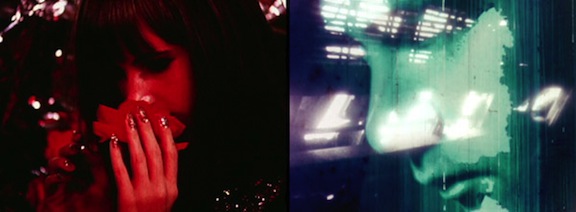
“Palace of Pleasure”
Given this critical neglect, the film, which only a year earlier had been hailed as “one of the best films of the year” was suddenly thrown into oblivion, and as an independent film, with no one to care for the negative, nearly lost forever to the caprices of indifferent film preservation, not least of which is the fact that the film was shot on 16mm color reversal film, which for all intents and purposes no longer exists. The only reason that I know this film as well as I do is that I was lucky enough, during my early, omnivorous film going days, to see two or three projections of Palace of Pleasure at the now defunct Filmmakers’ Cinematheque when it was located on West 41st Street in Manhattan, in the basement of the now-demolished Wurlitzer Building, as projected by filmmaker Bob Cowan. We both remarked how gorgeous and accomplished the film was, and then, as mysteriously as it had appeared, it vanished, leaving only memories of its audacious visual imagery in its wake.
A similar case could be made for Gerard Malanga’s In Search of the Miraculous, a half-hour film composed of two 1200’ 16mm reels superimposed during the printing process, one on top of the other, with each separate reel composed of 100’ reels of color or black-and-white reversal film, running about 3 minutes apiece, chronicling Malanga’s love for his muse at the time, Benedetta Barzini. I was, once again, lucky enough to be present at a screening of the work print, before the final composite print was made, at the Filmmakers’ Cinematheque with Malanga in attendance, as two 16mm projectors were superimposed on one screen, along with a tape recorded soundtrack (later transferred to a standard 16mm optical sound track for general release), and once again, I was stunned by the aggressive beauty of the film, which, in Malanga’s own words, was a quest on more than one level — a search for the structure of the film as he was making it, as well as a desire to infinitely possess the image of Ms. Barzini, down to the very last leader-streaked frame of each 100’ reel.
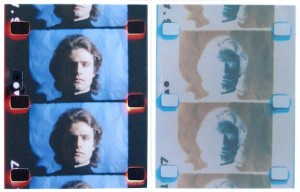
Gerard Malanga
As Malanga told me at the time, “as I was making the film, more ideas came; it grew. It’s like the idea of one perception leading to another; Charles Olson said that. I wasn’t ready to stop the film until I realized I had expanded it to the end. I was searching . . . at the same time I was making a movie of a search, so I was searching through the film and outside the film” (as qtd. in Dixon 1997, 109). The whole idea of making a film without a script, as a series of mood pieces, incorporating footage shot by his colleagues Warren Sonbert, Andrew Meyer, Warren Sonbert, and Marie Menken, following a thread which is often indiscernible, over a period of several years, was inspired by P. D. Ouspensky’s book of the same name. As Ouspensky noted, “it is only when we realize that life is taking us nowhere that it begins to have meaning” (as qtd. in Boldt, 118), and it is this free form search for the next image, whatever that image might be, that propels the film forward, with each new sequence coming as a surprise, unrestrained by narrative convention.
On the West Coast, at the same time, the psychedelic filmmaker Ben Van Meter, who had earlier made a series of short films such as The S.F. Trips Festival: An Opening (1966), a seven-minute film that used triple-exposed imagery to create a kaleidoscopic vision of an ecstatic dance party in San Francisco, began work on his magnum opus, Acid Mantra Or Re-Birth of A Nation. Acid Mantra was really an extension of Van Meter’s first experiments with intense imagistic superimposition as employed in S.F. Trips Festival, and Van Meter gives this account of that film’s genesis:
I went to the Trips Festival alone with my Bolex [a 16mm lightweight, spring-wound camera, then the camera of choice for experimental filmmakers] and four rolls of precious color film. It was a three-night event so I planned to expose each roll once a night and rewind all of them in the dark room the next day [. . .] after having the triple exposed film developed I pretty much just spliced the four rolls together, scratched titles on the emulsion, made a sound track by fucking with quarter inch tapes until I had something that seemed to fit the footage and had it printed [. . .] Acid Mantra was the culmination of the experiment in multiple exposure. The finished film was 50 minutes long and originally meant to be projected on three screens, somewhat synchronized, approximating a light show. It was put together on A & B rolls but using camera originals that had been double and triple exposed. I shot and accumulated the footage during 1966 and ‘67 and did [then did] the editing [. . .]
As Thomas Albright of Rolling Stone wrote of Acid Mantra shortly after the film’s first screening in 1968,
Acid Mantra, mixes as many as six different exposures, sometimes adding triple-exposed color to triple-exposed black-and-white, in a light-show-like spectacle of the rock sub-culture, Baroque texture, momentum and soaring sweep, over a sound-truck combined incessant drumbeats with electronic effects [ . . .] Van Meter’s technique is a mixture of choice and chance. “The old style of multiple exposure was all preconceived,” he said. “I get much more interesting effects by mixing everything in the camera. Not that I don’t make choices after exposing a roll, I have a good idea of what I want to shoot over it. And I edit, of course. But the percentage of usable footage is surprisingly high.”
He uses a similar technique for his sound tracks, “mixing and over dubbing until I get a flowing thing — well enough to carry the thing.” Parts of Acid Mantra include songs by Country Joe and the Fish, old Southern dance music by Charlie Poole and the North Carolina Ramblers, excerpts from President Johnson’s State of the Union message. At its very end, an actor reads a quote from a Yoga text. Van Meter thinks of all his films as “experimental documentaries,” but transcending narrative or “literary metaphor” to embrace a “total experience.” He says, “Acid Mantra is like a river of images, like the universe is a river of images constantly flowing in and out of each other.” He has been filming Acid Mantra for more than two years [and the film] contains an extraordinary mixture of location rock dance and lightshow scenes, crowds on downtown streets, footage from a country party hosted by the Grateful Dead [and other materials, building to] a multi-textured, propulsive structure of sprawling power.
The overall effect of the film is nothing less than genuinely stunning — this is a raw celebration of existence, unfettered by the constraints of society. As I wrote in my study of American experimental film in the 1960s, The Exploding Eye,
one of the most remarkable aspects of Acid Mantra is its celebration of human sexuality and play as a function of the sacred, as opposed to the commercialized visions of “free love” bequeathed to our collective consciousness by such mainstream films as Michael Wadleigh’s Woodstock (1969) and Arthur Dreifuss’s The Love-Ins (1967), both films made long after the initial wave of experimentation and euphoria had passed. In Acid Mantra, we see people dancing and congregating in a San Francisco dance hall, with black and white and color images simultaneously competing for our attention, as the soundtrack provides a mesmerizing counterpoint to the visuals we are witnessing.
As the film progresses, the scene shifts to a party in the California hills, as nude men, women and children swim, dance and play with unabashed abandon. It is of particular importance here to note that Van Meter’s camerawork documents the spectacle of the nude body with egalitarian élan. Glimpses of full frontal male and female nudity drift across the screen in a haze of visual splendor reminiscent of Botticelli; the light (natural sunlight for the most part) shines off the bodies of the celebrants as if sanctifying their paean to human sexuality.
Couples fall to the earth and begin coupling ecstatically, as Van Meter drips blobs of red and green paint directly on the film to suggest an approximation of their orgasmic energy. Yet the couples are photographed as part of an overall exquisite blur, and are never distinct . . . What is most remarkable about Acid Mantra is its overwhelming innocence of vision and execution; primitive and infinitely complex, it captures in an endlessly shifting tapestry the grandeur and ephemeral beauty of a vanished age. (Dixon 1997, 175-176).
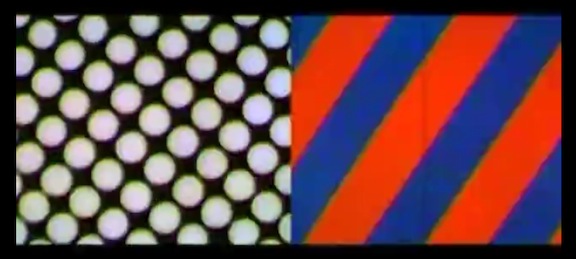
Paul Sharits’ Razor Blades (above), another split screen, two-projector film, composed of a series of stroboscopic loops that repeat with variations in precise interlock for a rather harrowing half-hour, is a different proposition altogether. As the late David Bienstock, then head curator of film at The Whitney Museum wrote at the time of the film’s release,
In Razor Blades, Paul Sharits consciously challenges our eyes, ears and minds to withstand a barrage of high powered and often contradictory stimuli. In a careful juxtaposition and fusion of these elements on different parts of our being, usually occurring simultaneously, we feel at times hypnotized and re-educated by some potent and mysterious force . . . He seems intent upon going against the grain of our perception and feelings, and we are forced to either stop the flow of images or to dive into them fully with total abandon. If we can do this we find the film deeply satisfying, because it is conceived to break down our defenses and then to work on a subconscious level to initiate us into a new level of awareness. By opposing the eyes and ears against the mind, Razor Blades cuts deeply, both in our psychic and visceral bodies, and is a forerunner of what films some day may become — totally programmed visual, auditory and psychological environments. (as qtd. in Light Cone)
As Sharits himself noted of his work,
I wish to abandon imitation and illusion and enter directly into the higher drama of: celluloid, two-dimensional strips; individual rectangular frames; the nature of sprockets and emulsion; projector operations; the three-dimensional light beam; environmental illumination; the two-dimensional reflective screen surface; the retinal screen, optic nerve and individual psycho-physical subjectivities of consciousness. (as qtd. in Rossen).
The ecstasy that Sharits is aiming for, then, is far more rigorous and intense than Van Meter’s or Malanga’s work; it is formalist, even structuralist, but at the same time it is deeply humanist, echoing the many personal tragedies that Sharits experienced in his lifetime. While I never had the pleasure of meeting Paul Sharits, I was very much a friend to his brother Greg, also a filmmaker, who was the manager of the Filmmaker’s Cinematheque at its 41st Street location in 1967, and during his tenure organized numerous lightshows, screenings of avant-garde films, and multi-media events; see the poster that accompanies this article as an example of Greg’s graphic design work, redolent of the free spirit of the era. I first met Greg one day at the Film-Makers’ Cooperative — a distribution company for experimental films, which exists to this day — when a group of films for that evening’s screenings at the Cinematheque failed to arrive on time, and Greg asked if anyone in the Coop would be willing to have their films screened instead.
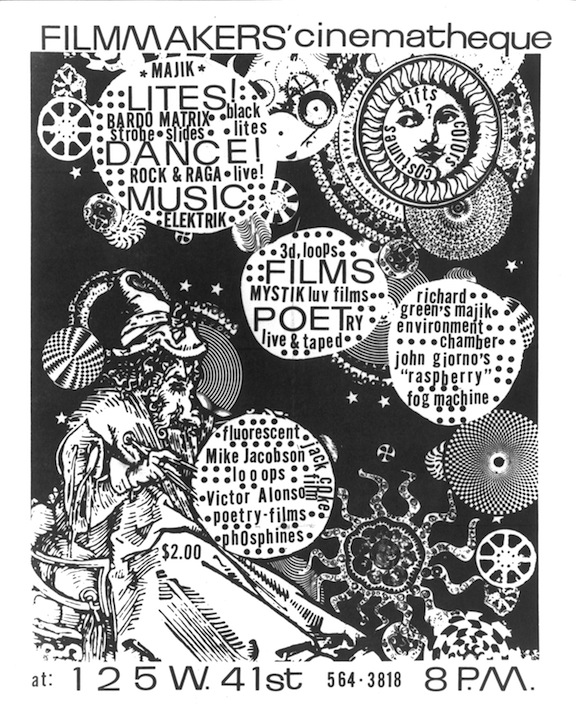
I was there when Greg’s call came in, and with the assistance of Leslie Trumbull, then the secretary of the Coop, immediately agreed to have some of my films screened as an emergency backup. When Greg showed up to collect both me and the films, we took the subway back uptown and became fast friends. It turned out, incidentally, that the films in question had in fact arrived at the theater, but had been placed by some gentle soul behind a speaker on the stage, as I discovered shortly afterwards — so the result that evening was a combined show of the scheduled programming, with my work thrown in as an addition.
Greg was one of the kindest, most gentle people I’ve ever known in my life, but he hid — from all of us — a great deal of torment, and after the summer of 1967 spent managing the Cinematheque, mysteriously vanished one morning, took a bus to the middle of the Midwestern United States, and jumped off the roof of the bus terminal in an apparent suicide bid. Greg survived this misfortune, but after that, his life became more complex than ever, and he would send me from time to time letters that consisted solely of pieces of colored paper, with no words, marked only with a return address, but no name.
When I replied to these missives, Greg admitted by return mail that he was my “correspondent,” but shortly after that the letters ceased. Then came the shocking news of Greg’s death. What had happened? In retrospect, of course, it seems clear enough; if the 60s were Edenic, the 70s were empty, and the 80s ushered in the beginning of the era of money as the barometer of all social values, something which has only become more pronounced today. Greg was simply too fragile to survive the social shift, in which artistic values were being replaced by sheer financial considerations, and found it simply impossible to carry on.
As Jeremy Rossen notes, the impact of Greg’s death on Paul Sharits was literally incalculable, writing that “for [Paul] Sharits, the 1980s began with the death of his brother Greg; he was killed charging the police with a gun in his hand. Already battling the effects of severe bipolar disorder, Paul was devastated and never fully recovered from the tragedy. Throughout the decade, Sharits would complete several films and locational works, but spent the majority of his time painting, a preferred medium he had temporarily abandoned. Indicative of his tortured mental state at the time, his paintings concentrated on medical pathology, disease and decay.”
So when one considers Razor Blades, which filmmaker Tony Conrad described as “refreshing [and] relaxing” and a film that “really lit up the inside of my head . . . the banquet of images was especially pleasing & tranquil from the first row where I sat” (as qtd. in Lightcone) and New York Times critic Vincent Canby paradoxically described as “extraordinarily unsettling as the mind tries desperately to make intelligent connections between recognizable images, while at the same time it automatically falls into the pace of light explosions” (Film-Makers’ Cooperative website], it seems clear that Sharits was operating in a space of ecstatic overload, in which the barrage of images he created melded together into a world that was all-encompassing, in which the viewer, and the maker, could lose themselves in ecstatic union with an unending flow of images. There is one tantalizing clip of the film available; Paul Sharits’ son, Christopher Sharits, has recently posted a four minute excerpt of the film in all its split-screen, frame-for-frame synchronized glory on Vimeo, at https://vimeo.com/128424379 — but in no way can this stand in for the complete and overwhelming experience of viewing the film on a large screen, with an audience, in its original dual projector 16mm format, with the sound, as Paul Sharits wished it to be, played “loud.”
The problem we face with all these works, no matter how transcendent they are, and however much we might need their example now, is that the original printing materials, and whatever 16mm prints might exist, are locked within the vaults of various archives, inaccessible to the general public.
And yet, An Early Clue To The New Direction is really a key artifact of the era, one which excited a great deal of attention when first released, as in this comment by Douglas M. Davis of The National Observer, who viewed the film during the competition in Ann Arbor: “The grand prize … went to Andrew Meyer’s black-and-white An Early Clue to The New Direction, whose virtues had nothing to do with technical polish. Mr. Meyer’s film hung on dialogue, cast, and plot (of a kind), clearly moving in a new direction. Its central virtue was nothing less than a superb performance by an old man, Prescott Townsend, playing a Boston roué long past his time, who charms a young girl [Joy Bang] with his ‘snowflake theory’,” while critic James Stoller in The Village Voice rhapsodized that “one felt that Andrew Meyer had opened a new world for 16mm cinema, one in which many kinds of excuses no longer need to be made. An Early Clue to The New Direction — apt title — his most recent film, is unexpected, glorious, and indescribably moving, and I can’t forget it” (both as qtd. in the Film-Makers’ Cooperative website].
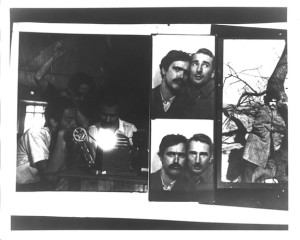
The improvisatory actor Taylor Mead, left, editing a film with filmmaker Ron Rice, with Jerry Joffen in the background; a photo booth strip of Rice and filmmaker Jack Smith; Ron Rice posing next to a tree.
But the problem we face with all these works, no matter how transcendent they are, and however much we might need their example now, is that the original printing materials, and whatever 16mm prints might exist, are locked within the vaults of various archives, inaccessible to the general public. On the one hand, at least these films still exist, along with a host of other 1960s Edenic visions, such as Ron Rice’s The Flower Thief (1960) and Vernon Zimmerman’s Lemon Hearts (1962), both starring the brilliant improvisatory actor Taylor Mead, but with the death of the 16mm film format, and without a clear chain of title, and given — of course — their fiercely independent nature, these films will likely never make it onto DVD, and so they’ll remain visions for the few who already know they exist, while never having a chance to resonate with 21st century viewers on a wider scale.
So this, in the end, is the central problem this essay teases out, and then leaves for lack of a ready solution: what to do with these orphan films? How can they regain their former currency? Are we going to allow mere technological problems — which are the key factors in all the films discussed here — to dictate to us what we can and cannot see? These are the questions facing us now, as scholars, preservationists, and audience members. These works have valuable lessons to teach us now about regaining our lost humanity in the digital era — but when will we get a chance to see them? That’s really the ultimate problem this essay hopes to raise — how can they be restored to us? If we lose these films, and thus access to the period that created them, I would argue that we have not only lost the work of a key period in avant-garde film history. We have also, in a sense, lost an essential link to our authentic selves, before the technological tidal wave of 21st century digital detritus washed over us, elevating the trivial to the center of our collective attention, while simultaneously leaving these works — and others equally valuable — behind.
Works Cited
Albright, Thomas. “”Make Love, Not War, or Brown Rice,” Rolling Stone 10 (May 11, 1968) <http://www.rollingstone.com/movies/features/make-love-not-war-or-brown-rice-19680511>.
Anderson, Jason. “Lost and Found,” Artforum January 22, 2009, <http://artforum.com/film/id=21887>.
Broomer, Stephen. Hamilton Babylon: A History of the McMaster Film Board. University of Toronto Press, 2016.
Boldt, Laurence G. Zen and the Art of Making a Living: A Practical Guide to Creative Career Design. New York: Penguin, 1999.
Buckley, Cara. “Wanted: Home For A Prized Trove: D. A. Pennebaker and Chris Hegedus’s Counterculture Archive,” The New York Times October 27, 2014.
Dixon, Wheeler Winston. The Exploding Eye: A Re-Visionary History of 1960s American Experimental Cinema. Albany: State University of New York Press, 1997.
Film-makers’ Cooperative, The. “Paul Sharits,” n.d. <http://film-makerscoop.com/rentals-sales/search-results?fmc_author=688>.
Lightcone Distribution. “Razor Blades 1965-1968”, n.d. <http://lightcone.org/en/film-4637-razor-blades>.
Rossen, Jeremy. “Inescapable Anxiety – The Films of Paul Sharits,” Harvard Film Archive (September/November 2015,) <http://hcl.harvard.edu /hfa/films/2015sepnov/sharits.html>.
Van Meter, Ben. “Humble Ben Van Meter,” n.d. <http://www.benvanmeter.net/#Trips>. Accessed February 17, 2016.
Wheeler Winston Dixon is the James Ryan Professor of Film Studies, Coordinator of the Film Studies Program, Professor of English at the University of Nebraska, Lincoln, and, with Gwendolyn Audrey Foster, editor of the book series Quick Takes: Movies and Popular Culture for Rutgers University Press. His newest books are Black and White Cinema: A Short History (2015), Dark Humor in Films of the 1960s (2015), Cinema at the Margins (2013), Streaming: Movies, Media and Instant Access (2013); Death of the Moguls: The End of Classical Hollywood (2012); 21st Century Hollywood: Movies in the Era of Transformation (2011, co-authored with Gwendolyn Audrey Foster); A History of Horror (2010), and Film Noir and the Cinema of Paranoia (2009). Dixon’s book A Short History of Film (2008, co-authored with Gwendolyn Audrey Foster) was reprinted six times through 2012. A second, revised edition was published in 2013; the book is a required text in universities throughout the world.
Previous Post: The Music of Film, TV, Video Games, and More
